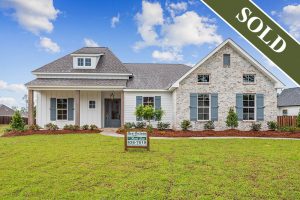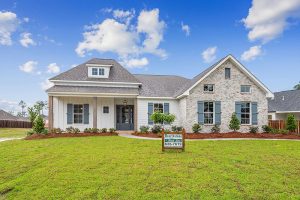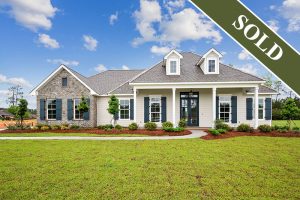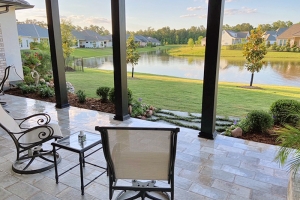One of the most important parts of the home sale process is staging your home. According to industry leaders, staging your home prior to putting it on the market will not only make you more money but will also help your home sell faster.
The National Association of Realtors reported that 96% of realtors believed staging had an impact on the buyer. Here are some great tips for staging your home before you put it on the market.
Go on a Cleaning Spree
For those on a budget, this is a great way to start the process of getting your home ready to sell. Most homeowners do weekly tasks to keep their home clean like dusting and vacuuming. When getting your home ready to sell, go the extra mile by scrubbing the grout in the bathrooms, soaking faucet heads in vinegar to remove limescale buildup, clean the baseboards and deep cleaning all the remaining areas of the house.
Declutter Everything
A big room can look small and cramped when it is filled with clutter. When staging a room, remember less is more. Just think, if you declutter now, there will not be as much stuff to pack when moving.
Keep Flat Surfaces Clear
Shelves, countertops, desks and tables should be cleared. According to top professional home stagers, this is one of the top on the list. A few decorations here and there are fine, but clean lines are a home staging staple.
Remove Personal Items
A buyer does not want to see that this home belongs to the seller. The buyer wants to be able to envision themselves in the home. Remember you want to showcase your home's potential and keep distractions at bay. Removing family photos, knick-knacks or memorabilia that can distract potential buyers is a must.
Paint Walls with Neutral Colors
Bright or dramatic paint color can give a negative impression on buyers. In order to appeal to the widest range of buyers, repaint your walls in a neutral color. Use color schemes such as white, cream, beige or light gray. Studies show that neutral paint in homes can bring a seller an average of 107% return on investment.
Refresh with Mild Scents
Another sense that buyers use when touring a home is smell. Bad odors such as pets or cigarettes can detour buyers. If your home has been exposed to such elements over time, take baking soda and sprinkle it on soft surfaces such as carpet and furniture. You will want to leave it there overnight and then vacuum it up the next day. Another trick is to wash your windows and clean the walls with mild soap and water. Steaming cleaning your floors will also help with pet odors and stains.
Remove Evidence of Pets
Not all potential buyers are pet lovers. Pets can cause damage to the home such as scratch marks, odors and stains. If these reminders are left, it can detour many buyers from purchasing your home. A tip for pet stains is to treat them with a mixture of vinegar, water, baking soda, peroxide and detergent. If a pet has scratched hardwood floors, purchase a hardwood repair kit to fix the scratches. Just like the sellers leave when someone tours your home, the pets should also.
Let in Natural Light
When looking at home listings many always talk about the open and bright spaces. Letting in the sunlight is a free staging tip and can make a world of difference in a space. Both professional home stagers and real estate photographers believe a well-lit room is a strong selling point for those looking to purchase a home.
Choose the Right Light Bulbs
Most homes still need light fixtures to brighten the rooms. Do not use fluorescent bulbs rather use soft white bulbs that some say mimic natural light. Some homeowners often use daylight bulbs which send a blue hue into the rooms. These work well in kitchens, bathrooms and home offices.
Create More Space with Mirrors
Just like magic mirrors can give the illusion of more space in a room. In order to make your square footage "stretch," you will need to strategically place mirrors. An example would be to take a large mirror and place it at eye level near a light source in a room. This makes the room feel bigger and more comfortable.
Upgrade the Cabinets
Dated cabinets can make your kitchen look old and run down. A way to fix this problem without breaking the bank is to transform your existing old cabinets. To do this you can add a fresh coat of paint and new hardware.
Organize the Closets
Buyers always look at how much storage space a home has. Storage space is one of the top features on the buyer's list. A great trick to use is to organize and clean out your closets. Clear floors and neatly hung clothes can make a closet appear bigger. You want to create the feeling that there is a lot of empty space that can be used.
Rearrange Your Current Furniture
When working on a tight budget, a good solution is to work with what you already have. Make sure your floorplan and furniture create an easy flow for potential buyers to navigate. Change your furniture around to create a nice flow to each room.
Use Existing Items
As mention earlier, use what you got. If you need to purchase something on a budget a great place to find items is at estate sales, garage sales, thrift stores, antique stores, Facebook Marketplace or Etsy.
Place Decor Using the Rule of Three
A great insider tip is to group decorative pieces by three. For example take a large, medium, and small decor piece and place it next to one another on a coffee table. Another great idea is to take a tall vase and place it with two smaller candles.
Buy New Bedding
Worn bedding or mismatched bedding can mess a whole bedroom design. A well-made bed is a plus in staging a bedroom. Use neutral color bedding when staging.
Put Slipcovers on Furniture
Give your outdated or dirty sofa and throw pillows a lift. An easy way to do this is by putting slipcovers over the sofa and throw pillows. A tip is to always choose slipcovers that match the room decor. This is a much less expensive way to update a room over buying all new furniture.
Try Virtual Staging
Sometimes it is hard for buyers to envision a room when it is vacant. A vacant property can still be stage without bringing in furniture and decor. Virtual staging is a great way to stage a home on a budget. Virtual staging makes the area look really staged and can be completed by a virtual stager at $50 per photo.
These tips won't break your bank and will help you get more bang for your buck when you sell your home. It is still wise to hire a Realtor that is experienced in selling a home in your area.
Click Here For the Source of the Information.




















 While today's housing market is not in the buyer's favor, people are still purchasing homes. Most potential buyers will need a mortgage and there are many steps to this process. When deciding if this step is right for you, take into consideration the following things regarding the process.
While today's housing market is not in the buyer's favor, people are still purchasing homes. Most potential buyers will need a mortgage and there are many steps to this process. When deciding if this step is right for you, take into consideration the following things regarding the process.




